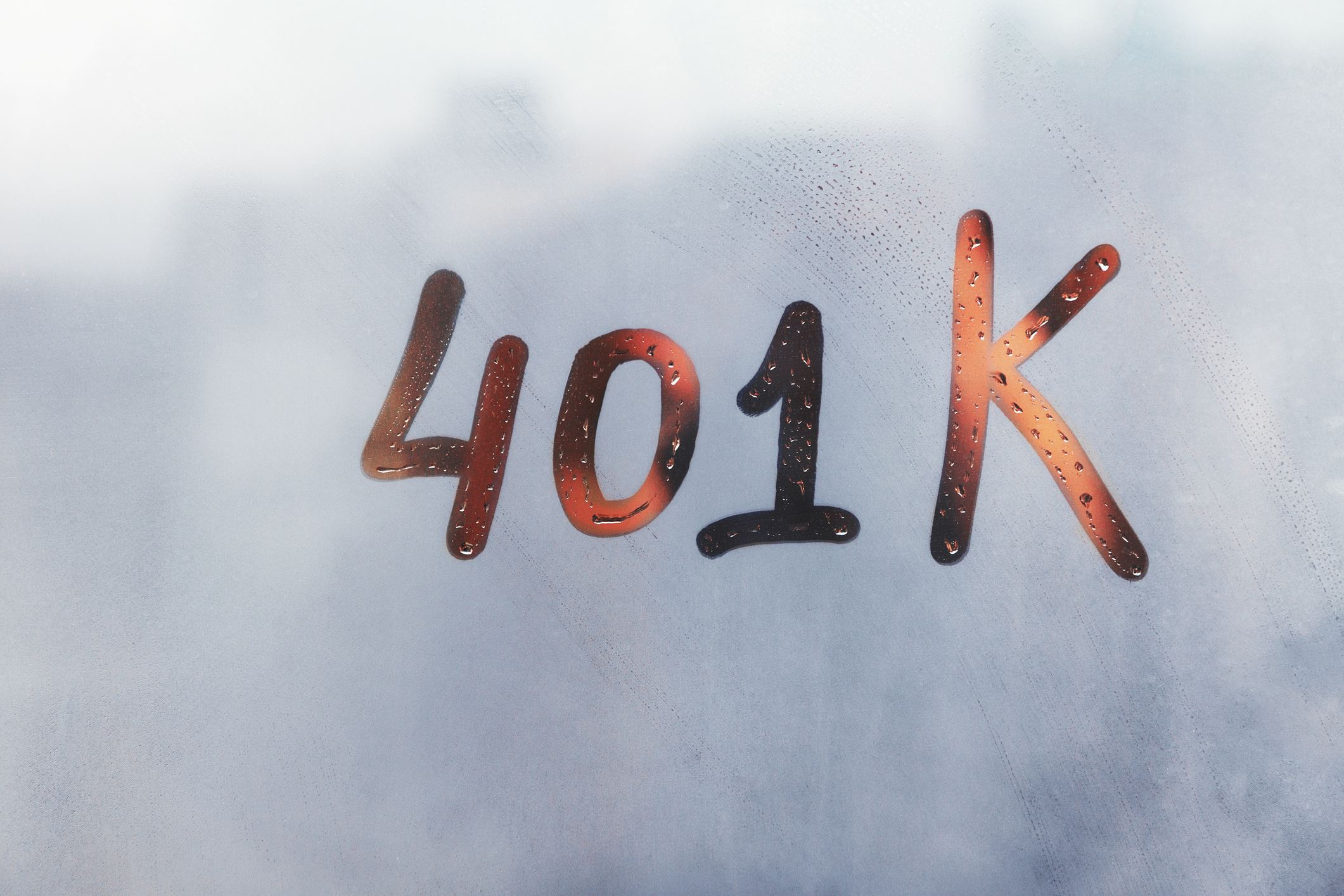What Is a Safe Harbor 401(k)?
A Safe Harbor 401(k) makes it easier for small businesses to offer retirement plans to their employees.


A Safe Harbor 401(k) is a retirement plan with one key distinction from a standard 401(k): Businesses can avoid the IRS's annual nondiscrimination testing. Safe Harbor plans require immediate employee vesting and mandatory employer contributions, and they are especially valuable to small business owners with fewer than 100 employees.
These plans make it easier for small-business owners to meet the rules set by the government while offering an attractive employee benefit. However, Safe Harbor 401(k) plans come with a catch. While matching contributions is a great perk for your employees' financial well-being and may help your company recruit and retain good employees, it could also increase your overall employee budget.
Why nondiscrimination testing can be tricky for small businesses
Per federal law, all businesses must pass annual nondiscrimination tests, which help ensure 401(k) plans benefit all employees — not just high earners or business owners. These tests include:

Sign up for Kiplinger’s Free E-Newsletters
Profit and prosper with the best of expert advice on investing, taxes, retirement, personal finance and more - straight to your e-mail.
Profit and prosper with the best of expert advice - straight to your e-mail.
- Actual Deferral Percentage (ADP) test. This test compares the average salary deferrals of highly compensated employees (HCEs) to those of non-highly compensated employees (NHCEs).
- Actual Contribution Percentage (ACP) test. This test compares the average employer-matching contributions received by both HCEs and NHCEs.
- Top-heavy test. This test helps evaluate whether a plan is top-heavy. In other words, the value of the assets in key employees’ retirement accounts cannot exceed 60% of all assets in an employer’s 401(k) plan.
To prove to the IRS that a 401(k) plan meets these requirements, it must undergo a series of complex annual nondiscrimination tests to determine whether it is fairly balanced.
A small business may face penalties if it fails one or more of these tests. The company may also have to refund 401(k) contributions made by its HCEs, and they, in turn, would have to pay taxes on the money they got back. Awkward.
Large companies can typically pass these tests because they have a team or department that can keep pace with all of the requirements. They also likely have many employees at different income levels contributing to their 401(k).
Pros and cons of Safe Harbor 401(k) plans
As with all retirement plans, Safe Harbor 401(k) plans have benefits and drawbacks.
Pros
- The plans help attract and retain talented employees. According to a Guideline study, half of employees surveyed said they would turn down a job offer from an employer that didn't offer retirement benefits.
- These 401(k) plans allow small businesses to circumvent the complex annually mandated nondiscrimination tests.
- Like a traditional 401(k), they provide tax benefits, meaning they decrease an employee's taxable income.
- They can be combined with profit-sharing to increase employee contribution limits.
Cons
- Although easier to administer, these plans can require careful analysis of possible high outlays for a small business. Safe Harbor 401(k)s could increase your payroll costs.
- They come with immediate employee vesting, meaning employees, even those who have resigned or are leaving shortly, are entitled to these contributions.
- They can be expensive because employer contributions are fixed.
Types of Safe Harbor 401(k)s
There are three options for a Safe Harbor 401(k).
- Nonelective contributions: These plans allow employers to make a 3% contribution for all employees, even if an employee chooses not to participate. That means that even if an employee makes no contributions to their 401(k) plan, their employer must still contribute to the employee's plan.
- Basic matching: Also known as an “elective” Safe Harbor plan, the employer matches 100% of the first 3% of an employee’s contributions. After that, 50% of an employee’s additional contributions (up to 5%) are matched by the employer.
- Enhanced matching: These plans may offer a 100% match on up to 4% of an employee's contributions.
2025 changes affecting all 401(k) plans
Starting in 2025, there are some key 401(k) plan changes, enacted via Secure 2.0, that could make it easier for certain workers to save for retirement.
Enacted by Congress in 2022, “Secure 2.0" paved the way for sweeping changes to retirement in the U.S., including updates to 401(k) plans, some of which will go into effect in 2025.
- Employees can defer $23,500 in 401(k) plans, up from $23,000 in 2024.
- Workers 50 and older can make up to $7,500 in catch-up contributions (in addition to the $23,500 limit).
- The "super" catch-up contribution limit for employees between 60 and 63 is $11,250. So, including the $23,500 limit, workers ages 60 to 63 can save up to $34,750 in 2025. Employers are not obligated to offer the super catch-up option.
- Auto-enrollment for certain 401(k) plans is another change for 2025. Most 401(k) and 403(b) plans (established after Dec. 28, 2022) must include automatic enrollment in the plan with a minimum 3% employee deferral rate.
- Secure 2.0 increased access to 401(k) and 403(b) plans for certain part-time workers. In 2024, employers had to allow plan access for employees who clocked at least 500 hours annually for three consecutive years. In 2025, the threshold drops to two consecutive years.
Can a safe harbor 401(k) plan be a Roth 401(k)?
Yes, a safe harbor 401(k) plan can be a Roth 401(k) or a traditional 401(k), depending on the employer's preference.
What if my employer offers a safe harbor 401(k)?
Can you say "free money?" Safe harbor 401(k) plans are generally simpler versions of traditional 401(k) retirement plans. Employers must contribute to their employees' accounts through matching or non-elective contributions, essentially a gift for employees. Employers can also avoid nondiscrimination testing requirements.
These plans have the same withdrawal rules, contribution limits and compounding power as traditional 401(k) plans, but the vesting rules differ. Contributions are fully vested at the time they are made, eliminating the need to follow a vesting schedule. That's good news for employees and employers alike.
Also, employees can defer a portion of their salary into a safe harbor 401(k) for an immediate tax break, and the invested funds grow tax-deferred. That means employees don't pay tax on their contributions until they withdraw the funds in retirement.
Employers that offer these plans must give eligible employees plan information within a reasonable time frame.
Related Content
Get Kiplinger Today newsletter — free
Profit and prosper with the best of Kiplinger's advice on investing, taxes, retirement, personal finance and much more. Delivered daily. Enter your email in the box and click Sign Me Up.

For the past 18+ years, Kathryn has highlighted the humanity in personal finance by shaping stories that identify the opportunities and obstacles in managing a person's finances. All the same, she’ll jump on other equally important topics if needed. Kathryn graduated with a degree in Journalism and lives in Duluth, Minnesota. She joined Kiplinger in 2023 as a contributor.
-
 Stock Market Today: Stocks Surge to Close a Volatile Week
Stock Market Today: Stocks Surge to Close a Volatile WeekIt was another day with a week's worth of both news and price action, but it ended on a strongly positive note.
By David Dittman Published
-
 Which Stocks Stayed Green as the Market Plummeted?
Which Stocks Stayed Green as the Market Plummeted?Only a handful of S&P 500 stocks managed to generate gains during the market's historic four-day plunge.
By Dan Burrows Published
-
 Could You Retire at 59½? Five Considerations
Could You Retire at 59½? Five ConsiderationsWhile some people think they should wait until they're 65 or older to retire, retiring at 59½ could be one of the best decisions for your quality of life.
By Joe F. Schmitz Jr., CFP®, ChFC® Published
-
 Home Insurance: How to Cut Costs Without Losing Coverage
Home Insurance: How to Cut Costs Without Losing CoverageNatural disasters are causing home insurance premiums to soar, but don't risk dropping your coverage completely when there are ways to keep costs down.
By Jared Elson, Investment Adviser Published
-
 Markets Roller Coaster: Resist the Urge to Make Big Changes
Markets Roller Coaster: Resist the Urge to Make Big ChangesYou could do more harm than good if you react emotionally to volatility. Instead, consider tax-loss harvesting, Roth conversions and how to plan for next time.
By Frank J. Legan Published
-
 Why Homeowners Insurance Has Gotten So Very Expensive
Why Homeowners Insurance Has Gotten So Very ExpensiveThe home insurance industry is seeing more frequent and bigger claims because of weather, wildfires and other natural disasters.
By Karl Susman, CPCU, LUTCF, CIC, CSFP, CFS, CPIA, AAI-M, PLCS Published
-
 Retired and Worried About a Recession? Six Ways to Prepare
Retired and Worried About a Recession? Six Ways to PrepareRetirees can plan for a near-term recession with a range of strategies, from small investment changes to significant lifestyle hacks.
By Maurie Backman Published
-
 Going Through Probate? How to Find the Right Attorney
Going Through Probate? How to Find the Right AttorneyJust having the skills and experience to do the job isn't enough. The probate attorney you hire needs to have the right temperament for your particular case.
By John R. Silva, Esq. Published
-
 Widow's Penalty: Three Ways to Protect Your Finances
Widow's Penalty: Three Ways to Protect Your FinancesHigher Medicare premiums, smaller Social Security payments, bigger tax bills … Financial changes can hit hard when a spouse dies. How to counter the blow.
By Ashley Terrell, IAR Published
-
 You're Stuck Taking RMDs: Now What?
You're Stuck Taking RMDs: Now What?When you've got to take required minimum distributions (RMDs) make some lemonade. Here are our top ideas for using the extra cash to enrich your life — or that of others.
By Maurie Backman Published